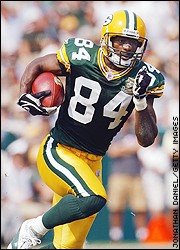 S.F. seeks go-ahead for 49ers stadium
S.F. seeks go-ahead for 49ers stadium
Bill would let city ask court to OK changes to '97 ballot measureCharlie Goodyear, SF Chronicle Staff Writer
Tuesday, April 4, 2006
Mayor Gavin Newsom's administration wants to let a judge rather than San Francisco voters decide whether the 49ers can move forward with a new stadium project that is different from the one the city's electorate approved in 1997.
At the request of the mayor's office, state Sen. Carole Migden, D-San Francisco, quietly introduced legislation last month that would let the city seek a Superior Court ruling that the 49ers and the city can legally proceed despite changes from what was presented to voters nine years ago.
A top real estate development aide to the mayor said the Newsom administration is not trying to avoid public scrutiny, but merely to settle at the outset important legal questions that will have direct bearing on the feasibility of a new stadium project and presumably on how or if the 49ers will proceed.
"In no way does it short-circuit the public vetting or approval process through multiple city commissions and multiple stops at the Board of Supervisors," said Michael Cohen, a former deputy city attorney who oversees military base reuse projects for the mayor's economic development office.
"It doesn't limit anyone's ability to sue or stop the project," said Cohen. "It simply allows us to validate that what we're doing is consistent with voter-approved measures."
Passage of Migden's legislation would save the team and its City Hall backers a return to the city ballot -- and the time, money and uncertainty that go along with it -- for an on-again, off-again project with a controversial political history in San Francisco.
Peter Detwiler, staff director for the state Senate's Local Government Committee, which is scheduled to take up Migden's bill, SB1842, on Wednesday, said he has found no precedent for what the Newsom administration is asking.
"If the stated reason for the legislation is, 'We're worried about whether (the new) mixed-use development falls within' " what voters approved, Detwiler said, "why don't we just ask the voters?"
At stake are a voter-approved $100 million public subsidy for the stadium, the fate of 77 acres of public parks and recreation space, and perhaps the future of the 49ers in San Francisco.
In June 1997, city voters passed two measures that were supposed to pave the way for a new stadium and mall at the site of the city-owned stadium at Candlestick Point that has been home to 49ers games since 1971.
Proposition D, which passed with only 50.4 percent of the vote, authorized $100 million in city bonds to help finance the new stadium. Proposition F, which passed with 50.3 percent of the vote, rezoned city land under and around the existing stadium -- creating the Candlestick Point Special Use District -- to allow construction of a larger stadium and a shopping and entertainment mall.
According to campaign assertions of the 49ers and then-Mayor Willie Brown -- which were supported by the city controller in a written statement included in the official ballot pamphlet sent to voters -- the mall, which was to be developed by Mills Corp., would eventually generate enough new sales-tax revenue to pay off the city bonds and their interest payments. After the vote, however, the project hit several snags as team owner Eddie DeBartolo Jr. became embroiled in a federal corruption probe, questions surfaced over the proposed development's economic feasibility, and quibbling started over who should pay for shoring up parts of the development site sitting on landfill.
Last year, Newsom signaled he wanted the 49ers to decide whether to proceed with the project by October of this year and before the team's lease runs out in January 2007.
The team said last year it wants to stay at Candlestick and brought in Lennar Corp., one of the country's biggest homebuilders, to discuss adding residential housing to the development -- something not explicitly approved by voters in 1997. A study expected to be completed by Lennar this summer will detail exactly how much housing could be included in the project's plans.
Now, city officials have turned to Migden to help secure legal assurances and move the project forward.
An aide to Migden said she was willing to carry the legislation because of the prospect of bringing additional housing to a city where demand keeps prices high.
"The city did ask us to carry it," said Migden spokesman Eric Potashner. "Of interest to the senator is the opportunity to create more housing."
Cohen, of the mayor's economic development office, said Monday that the legislation is intended to save the city time and money as well as uphold the will of the voters.
"This is a very good government efficiency measure," he said.
A representative for the 49ers indicated Monday that the team would like the legality of a development project that differs from the 1997 version to be settled at the outset.
"We certainly share the mayor's sense of urgency for this project," said 49ers spokeswoman Lisa Lang. "We've spent a great deal of time and money on this project over the past few years."
The Newsom administration's handling of the matter already is raising eyebrows at City Hall, however.
Board of Supervisors President Aaron Peskin said he was erroneously listed by Migden's office as a supporter of her bill and has concerns that a judge might rule on the development plan before supervisors have their say.
"The legislation in its current form is putting the cart a little bit before the horse," Peskin said Monday.
Cohen emphasized that the team has yet to present a formal development plan for the site or select a builder for the mall portion.
"We hope to know whether the 49ers and their development partners think there is even a feasible project or not before the start of the next football season," he said.







